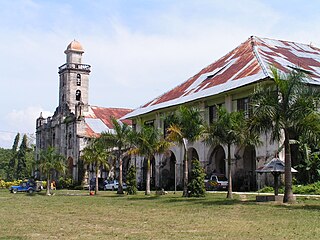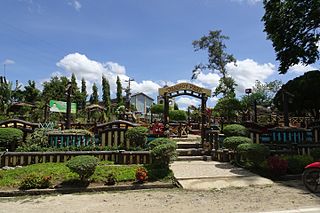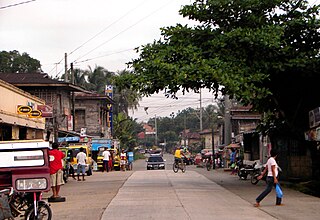
Tagbilaran, officially the City of Tagbilaran, is a 3rd class component city and capital of the province of Bohol, Philippines. According to the 2020 census, it has a population of 104,976 people.

Alburquerque, officially the Municipality of Alburquerque, is a 5th class municipality in the province of Bohol, Philippines. It had a population of 11,246 people at the time of the 2020 census.

Baclayon, officially the Municipality of Baclayon, is a 4th class municipality in the province of Bohol, Philippines. According to the 2020 census, it has a population of 22,461 people.

Balilihan, officially the Municipality of Balilihan, is a 4th class rural municipality in the province of Bohol, Philippines. According to the 2020 census, it has a population of 18,694 people.

Batuan, officially the Municipality of Batuan, is a 5th class municipality in the province of Bohol, Philippines. According to the 2020 census, it has a population of 13,845 people.

Catigbian, officially the Municipality of Catigbian, is a 4th class municipality in the province of Bohol, Philippines. According to the 2020 census, it has a population of 23,805 people.

Cortes, officially the Municipality of Cortes, is a 5th class municipality in the province of Bohol, Philippines. According to the 2020 census, it has a population of 18,344 people.

Dagohoy, officially the Municipality of Dagohoy, is a 5th class municipality in the province of Bohol, Philippines. According to the 2020 census, it has a population of 19,874 people.

Lila, officially the Municipality of Lila, is a 5th class municipality in the province of Bohol, Philippines. According to the 2020 census, it has a population of 12,240 people.

Loay, officially the Municipality of Loay, is a 5th class municipality in the province of Bohol, Philippines. According to the 2020 census, it has a population of 17,855 people.

Loboc, officially the Municipality of Loboc, is a 4th class municipality in the province of Bohol, Philippines. According to the 2020 census, it has a population of 17,418 people.

Maribojoc, officially the Municipality of Maribojoc, is a 4th class municipality in the province of Bohol, Philippines. According to the 2020 census, it has a population of 22,178 people.

Pilar, officially the Municipality of Pilar, is a 4th class municipality in the province of Bohol, Philippines. According to the 2020 census, it has a population of 28,693 people.

President Carlos P. Garcia, officially the Municipality of President Carlos P. Garcia and alternatively known as Pitogo, is a 4th class municipality in the province of Bohol, Philippines. According to the 2020 census, it has a population of 23,625 people.

Sagbayan, officially the Municipality of Sagbayan, is a 4th class municipality in the province of Bohol, Philippines. According to the 2020 census, it has a population of 24,335 people.

San Isidro, officially the Municipality of San Isidro, is a 5th class municipality in the province of Bohol, Philippines. According to the 2020 census, it has a population of 9,909 people.

Sierra Bullones, officially the Municipality of Sierra Bullones, is a third class municipality in the province of Bohol, Philippines. According to the 2020 census, it has a population of 26,095 people.

Talibon, officially the Municipality of Talibon, is a 1st class municipality in the province of Bohol, Philippines. According to the 2020 census, it has a population of 71,272 people.

Trinidad, officially the Municipality of Trinidad, is a 3rd class municipality in the province of Bohol, Philippines. According to the 2020 census, it has a population of 35,119 people.

Valencia, officially the Municipality of Valencia, is a 4th class municipality in the province of Bohol, Philippines. According to the 2020 census, it has a population of 28,392 people.



























